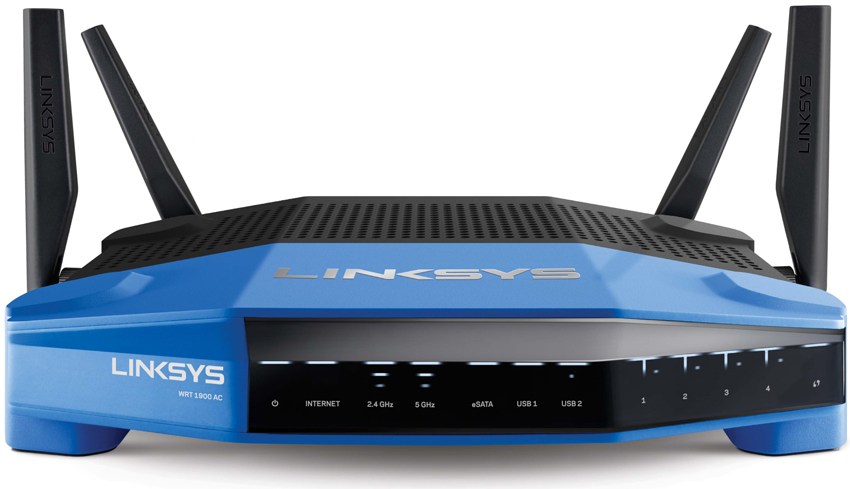
Wireless networking can be confusing. There are many numbers and letters being thrown around and with Gigabit Wi-Fi just starting to appear in mainstream devices, there’s more arcane info than ever to keep track of. Dual-band, 802.11, a,b,g,n,ac, 1300/1900, 600/900, 2.4GHz, 5GHz, beamforming … What does it all mean? In particular, what is the difference between the previous top performing Wi-Fi standard (802.11n wireless) and the new champ (802.11ac)? In this post, I’ll break it down to the basics.
Wi-Fi Basics
Wi-Fi is a wireless network that blasts information around on one of two radio frequencies: 2.4Ghz or 5GHz. Many Wi-Fi routers are capable of using both of these bands, and you’ll see them advertised as dual-band routers. Each frequency has advantages and disadvantages; 5Ghz has a shorter range than 2.4GHz if there are obstacles like walls involved, but 2.4 GHz is more prone to interference that degrades performance.
802.11 is the Wi-Fi standard and a/b/g/n/ac represents the progression from early wireless devices (802.11a) to the latest (802.11ac). Most wireless devices are backwards compatible, so they’ll negotiate a connection to a Wi-Fi network even if the wireless router supports a newer Wi-Fi standard.
Mbps (megabits per second) is the measurement of how much data the wireless router can transmit—usually felt by the user as speed. That Mbps bandwidth is shared by all the devices connected to the network, so as the number of connected devices rise the speed each sees tends to decrease.
600/900 Wireless N

In terms of mainstream Wi-Fi, 802.11n is the standard you’ll most frequently see. If you bought a device over the past few years with wireless capability, it probably supports 802.11n.
Wireless N supports up to four spatial streams—a way of using multiple antennas on the wireless router and the connected device to supercharge the data transfer speed. That 600/900 refers to the maximum possible data transmission rate. On the 2.4GHz frequency, that’s 300 Mbps and using the 5GHz radio, it’s 600 Mbps, for a combined maximum throughput on a Wireless N router of up to 900 Mbps.
1300/1900 Wireless AC

The latest Wi-Fi standard supports up to eight spatial streams, uses wider channels (allowing for more data), it’s more efficient and officially supports beamforming—using antennas to intelligently direct Wi-Fi at a specific device for faster performance.
These technological advances mean 802.11ac wireless routers offer 600 Mbps on the 2.4GHz frequency, but on 5GHz they can manage 1300 Mbps—or 1.3 Gbps—(that’s where the “Gigabit Wi-Fi” designation comes from), for a total throughput of up to 1900 Mbps when using a high performance Wireless AC router like the new Linksys WRT 1900AC.
So, the Advantages of 802.11ac Are…
More spatial streams, wider channels, more efficient data modulation and beamforming to supercharge Wi-Fi speed of specific devices.
Is Now the Time to Upgrade?
HD streaming video is one of the big consumers of Wi-Fi bandwidth and providers usually recommend 10 Mbps or better capability, so that puts things in perspective. 802.11n is hardly obsolete.
Installing a Wireless AC router doesn’t mean you’ll see the full benefits—unless your connected devices also support the 802.11ac Wi-Fi standard. That being said, I recently tested a Linksys Wireless AC1900 router and saw a nice uptick in Wi-Fi performance, especially when streaming video under heavy W-Fi network use, even though my connected devices all max out at 802.11n support.
The good news is that wireless routers are backwards compatible. So if your current wireless router is under-performing, replacing it with a Wireless AC router is not going to lock out any of your older Wi-Fi devices, you may just see an improvement in your wireless network’s performance and when you eventually add new devices that support 802.11ac, they’ll be able to take full advantage of that Gigabit Wi-Fi speed.
You can find a great selection of routers at Best Buy including some of the newest and fastest AC wireless routers on the market.



